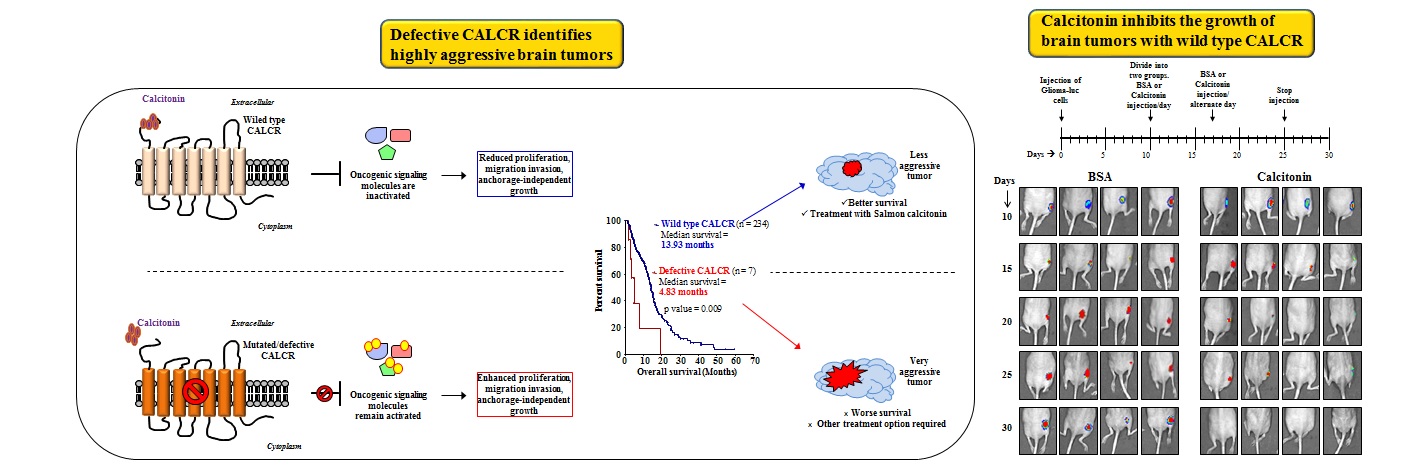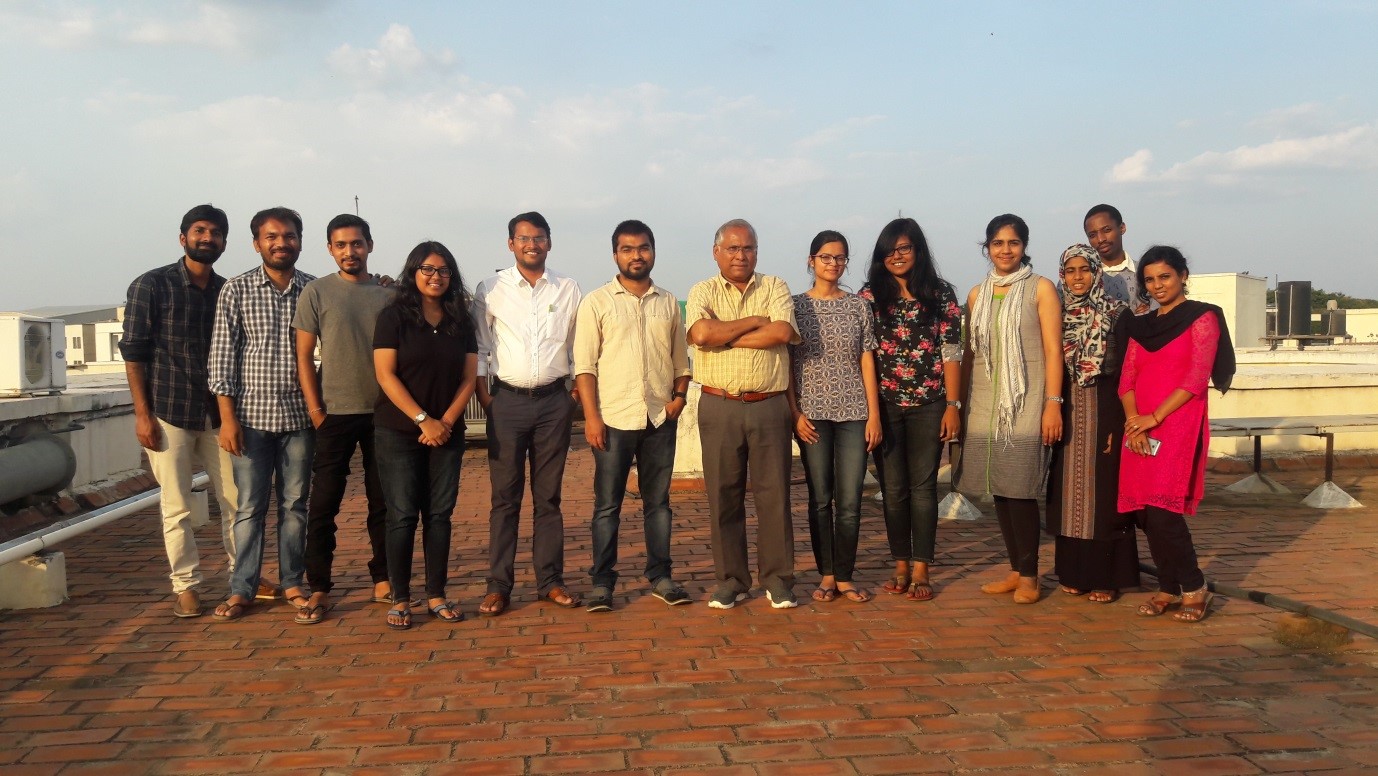Defects in CALCR identifies highly aggressive brain tumors

Advancements in effective therapeutics for glioblastoma (GBM), the most common adult brain tumor, have been minimal and the median survival still remains at 15-17 months only. Hence, there is a need to elucidate novel altered molecules for effective therapeutic possibilities. In this study, we explore the mutation spectrum of GBM patients from Indian and the cancer genome atlas to unearth novel pathways altered by mutations that predict survival in patients which revealed neuroactive ligand-receptor interaction pathway to be the most significant. Calcitonin receptor (CALCR), the most mutated gene in this pathway, was studied further which revealed this receptor to be a tumor suppressor in nature. The activation of the receptor by its ligand, calcitonin, led to decrease in tumorigenic properties of glioma cells such as proliferation, migration, invasion and anchorage-independent growth with a concomitant inhibition of oncogenic signalling molecules required for tumor growth. Patient-derived mutations in CALCR abolished these functions with the degree of loss-of-function negatively correlating with patient survival. Hence, we conclude that, for GBMs with wild type CALCR, calcitonin, which is prescribed for post-menopausal osteoporosis, could be re-purposed as a treatment strategy in conjunction with surgery, radiotherapy and chemotherapy.
Reference:
Loss-of-Function Mutations in Calcitonin Receptor (CALCR) Identify Highly Aggressive Glioblastoma with Poor Outcome. Pal J, Patil V, Kumar A, Kaur K, Sarkar C, Somasundaram K. Clin Cancer Res. 2018 Mar 15;24(6):1448-1458
Website URL: https://mcbl.iisc.ac.in/kumaravel-somasundaram/
Group photo:

Jagriti Pal:







